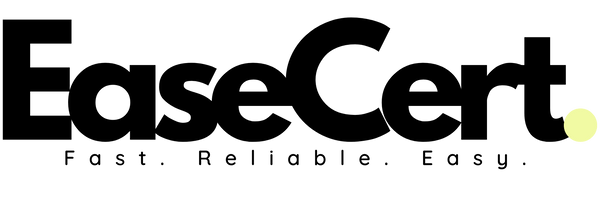
Formaldehyde Emission Limits under REACH Annex XVII Entry 77
The European Commission has introduced new restrictions on formaldehyde emissions in consumer products under Regulation (EU) 2023/1464, amending Annex XVII of the REACH Regulation (EC) No. 1907/2006. This update, listed as Entry 77, establishes strict emission thresholds for a wide range of consumer products. The restriction takes effect on 6 August 2026 for most articles and on 6 August 2027 for vehicle interiors.
These rules aim to reduce indoor air pollution and limit consumer exposure to formaldehyde released from materials and finished goods such as wood composites, foams, textiles, and coated articles. For general guidance on ensuring EU market readiness, see GPSR Compliance – Ensuring Product Safety & Market Access.
Overview of the Restriction
Products must not be placed on the EU market if they exceed the following emission limits:
- 0.062 mg/m³ for furniture and wood-based articles
- 0.080 mg/m³ for all other articles
These values are measured according to the testing parameters defined in Appendix 14 of the REACH Regulation, which specifies chamber-based emission testing conditions. Learn more about chemical testing for EU compliance and REACH documentation requirements.
Products Affected
The restriction applies broadly to consumer goods, including but not limited to:
- Furniture and wooden articles
- Toys and childcare products (Toy Safety in the EU)
- Textiles, curtains, and footwear
- Leather goods and accessories
- Paper, cardboard, and packaging (Packaging Compliance in Germany)
- Construction materials and flooring
- Electrical and electronic equipment (WEEE Registration Compliance Guide)
- Fitness and household equipment
Products exclusively intended for outdoor or industrial use are exempt, provided there is no foreseeable consumer exposure.
Key Exemptions
The following article categories are excluded from the restriction:
- Articles already restricted for CMR substances under Entry 72 of REACH
- Articles containing only naturally occurring formaldehyde
- Articles for exclusive outdoor use or use outside the building shell
- Medical devices and personal protective equipment
- Food contact materials (Regulation (EC) No. 1935/2004)
- Secondhand goods
Testing Methods and Compliance
Manufacturers and importers must verify compliance using chamber-based testing methods as referenced in Appendix 14 of REACH. Accepted standards include:
- EN 16516
- EN 717-1
- ISO 16000-3 / -9 / -11
- ISO 12460 series (derived or small-scale methods)
Testing typically runs up to 28 days to ensure accurate measurement of steady-state emissions. Representative testing may be applied for similar product variants when justified scientifically. For an overview of testing requirements and chemical assessments, see What Is a Safety Data Sheet (SDS)?
Business Impact
This restriction affects manufacturers and importers in multiple industries, including furniture, softlines, home goods, and packaging. To maintain EU market access, businesses must:
- Identify materials containing formaldehyde or related resins
- Secure valid test reports or supplier documentation
- Update technical documentation under REACH and GPSR
- Implement production quality control and traceability systems
Learn how to manage these steps efficiently in our Checklist: Launching a New Product in the EU.
Recommended Next Steps
- Review all materials and coatings for potential formaldehyde sources (Risk Analysis Process).
- Obtain test reports based on EN 16516 or EN 717-1 methods.
- Update your technical documentation and risk assessment files.
- Ensure all product labels and traceability markings are compliant (see Labelling Requirements for GPSR Compliance).
- Appoint an authorized EU contact for compliance (Appoint an EU Responsible Person).
- Plan compliance verification before the enforcement deadlines, including EU Safety Gate Registration.
Key Dates
- 17 July 2023 – Restriction published
- July 2025 – ECHA guidance revised
- 6 August 2026 – Enforcement for furniture, wood-based, and general articles
-
6 August 2027 – Enforcement for vehicle interiors
Conclusion
The new formaldehyde emission limits under REACH Annex XVII Entry 77 significantly raise the bar for product safety and indoor air quality in the EU. Businesses should act now to evaluate materials, update compliance files, and coordinate emission testing ahead of the enforcement dates.
EaseCert supports manufacturers, importers, and online sellers in achieving full conformity with REACH and the General Product Safety Regulation (EU) 2023/988. Our services include emission risk assessments, EU Responsible Person representation, and compliance documentation support. Learn more on our What We Offer page or explore our GPSR Cost Guide.
Frequently Asked Questions
Does this regulation apply to handmade or small-batch goods?
Yes. Any product placed on the EU market that may release formaldehyde under normal indoor conditions is covered, regardless of production scale. Handmade and artisanal items are not exempt unless they meet an exclusion category, such as secondhand goods or exclusive outdoor use. For guidance, see our EU Compliance Guide for Selling Consumer Products.
Do products sold on online marketplaces like Amazon or Etsy need testing?
Yes. Sellers offering goods to EU consumers are legally considered “importers” if they ship directly from outside the EU. These products must meet the same REACH and GPSR requirements, including emission testing or supplier documentation. Learn more in Amazon EU Sales: What GPSR Compliance Means for You or visit our Guide for Non-EU Sellers.
Is a barcode or EAN code required for REACH compliance?
No, REACH does not require a barcode. However, clear identification and traceability information must appear on the product label and packaging as part of the technical documentation requirements. For more information, read GPSR Warning Examples: How to Comply with EU Labelling Rules.
What happens if testing shows results slightly above the emission limit?
If test results exceed the emission thresholds, the product cannot be marketed in the EU. A new test may be performed if design or material changes reduce emissions. Alternative small-scale tests may only be used if scientifically correlated with the reference method results. Read about corrective steps in What Happens If You Don’t Comply with GPSR or see how to manage recalls and avoid fines.
Where can I find the full legal text?
The official text is available via the EUR-Lex website under Regulation (EU) 2023/1464 amending Annex XVII of REACH.
Additional Resources
- Regulation (EU) 2023/988 – General Product Safety Regulation (Official EU Law)
- EU Safety Gate (RAPEX) – Alerts for Dangerous Products
- European Chemicals Agency (ECHA) – REACH Regulation Overview
- Directive (EU) 2024/2853 – Product Liability Directive (Updated Version)
- Understanding the EU Product Liability Directive
- How to Handle a Product Recall under the GPSR
- EaseCert FAQ
- Contact EaseCert for REACH and GPSR Compliance Support
